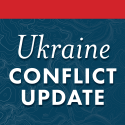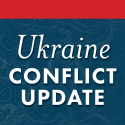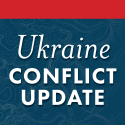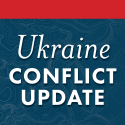The World After the War in Ukraine: Who or What Will Stop Putin?
Mar 6, 2022 - ISW Press
We cannot seem to believe the raw, extreme realism by which Russia’s Vladimir Putin is acting against Ukraine. Raw realism is so abominable to American thinking that we would rather believe he is crazy. Yet raw realism is what we are seeing in Ukraine: Putin has the might, so he is intent on making the right. He is sure that the West will not intervene militarily, which is not hard to conclude since the U.S. position has been stated, publicly, multiple times. He has made Russia resistant to sanctions in the near term and concluded that, by the time sanctions take full effect, Ukraine will be his. Further, he has judged that Europe is too dependent on Moscow to continue sanctions in the long term. Putin also knows that once force is used, only an equal or greater force will stop him. He knows that sanctions alone are not that equal-or-greater force. He has already escalated his use of force in Ukraine — and has very publicly put his nuclear deterrent forces on high alert — until he gets what he wants, because he’s convinced he can.










